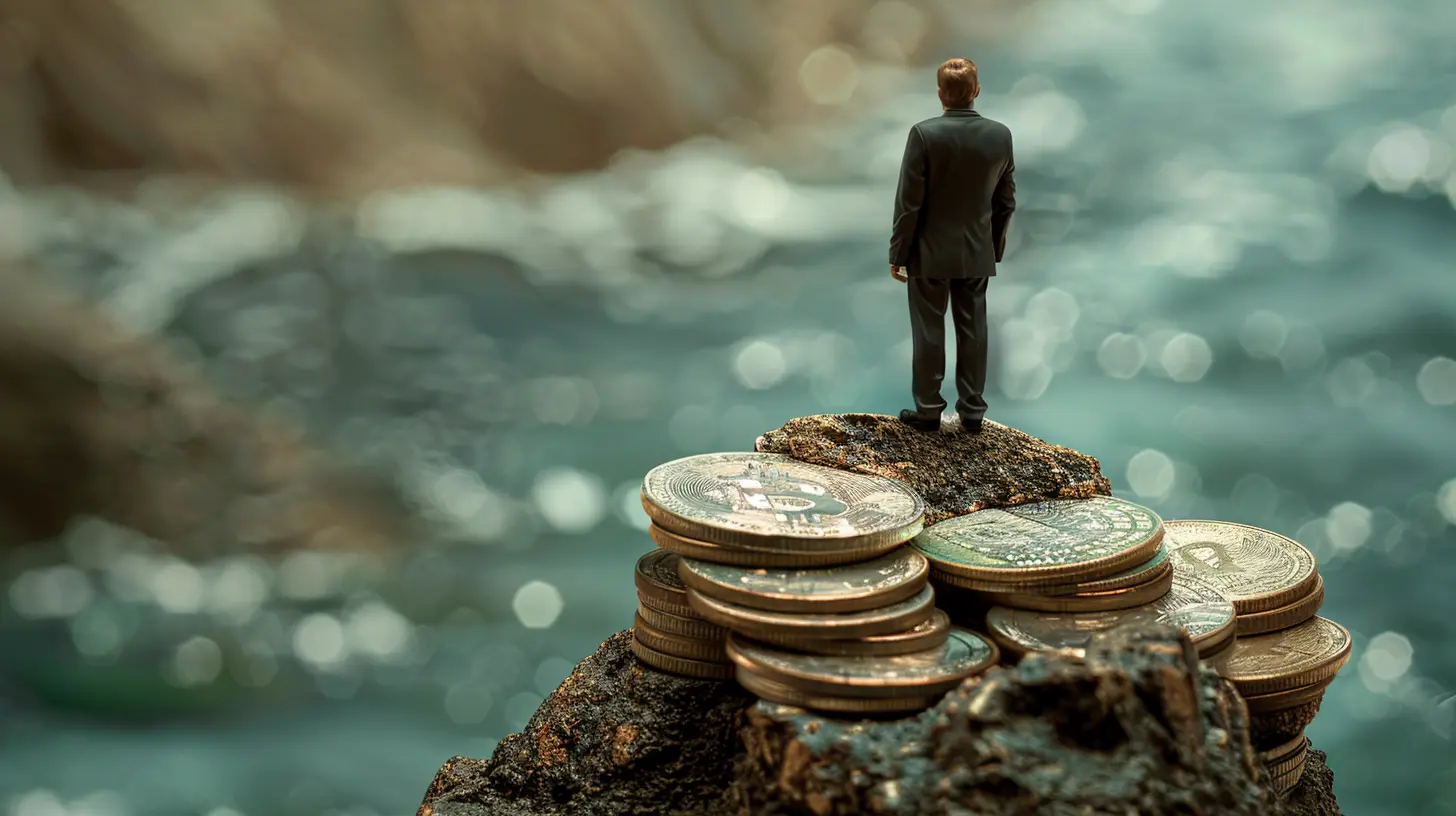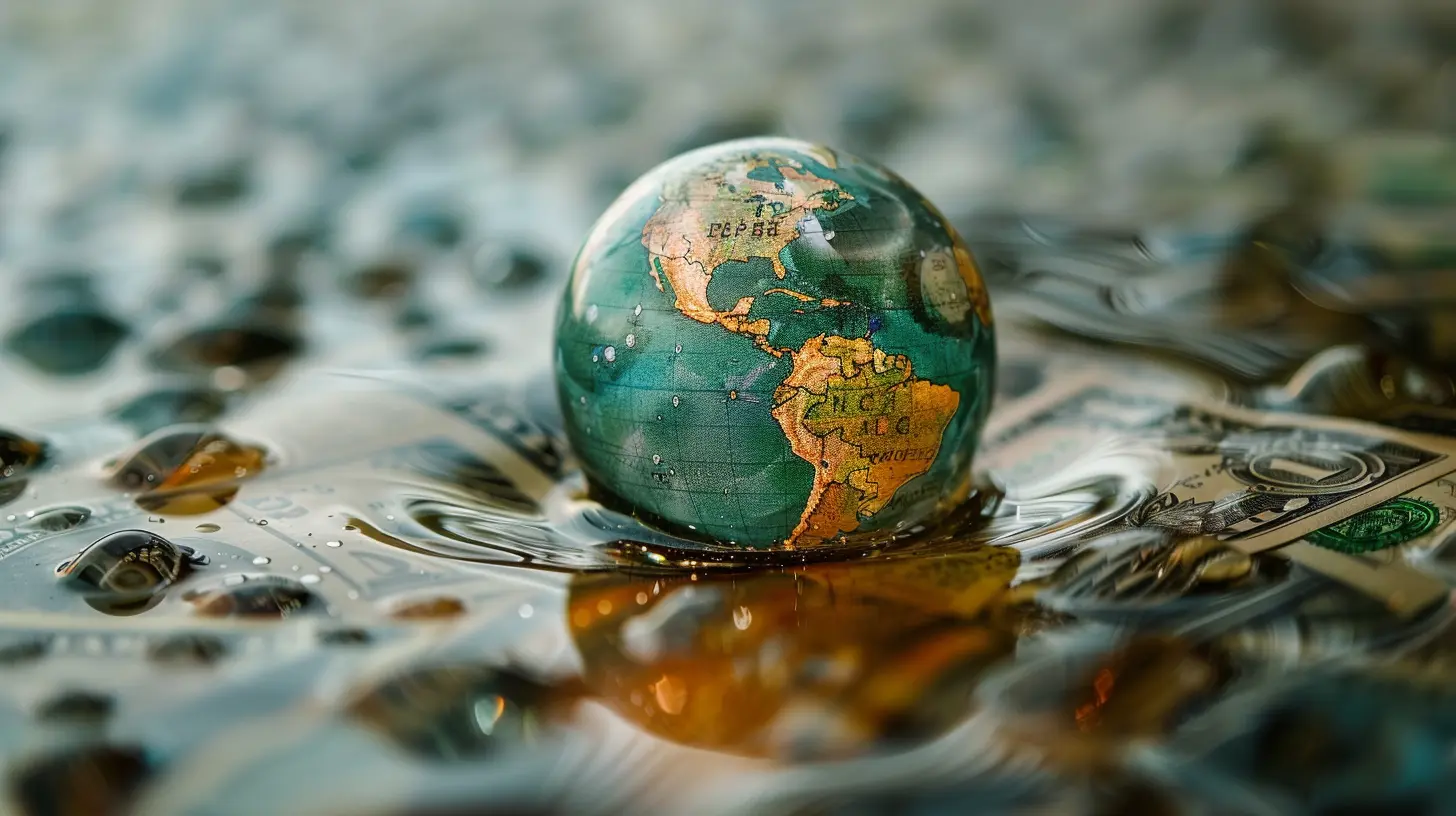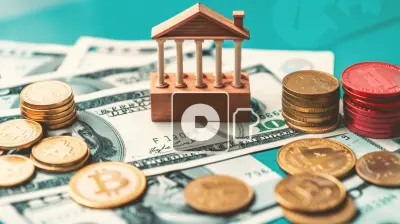19 December 2024
Deflation. It’s one of those economic terms that sounds harmless—after all, who doesn’t love cheaper goods and services? But hang on a second. What if I told you that a persistent drop in prices, often celebrated by consumers, could leave an economy limping for years or even decades? That’s right—deflation isn’t always the sweet deal it seems to be. In fact, it can have serious long-term consequences that ripple through every corner of the economy.
Let’s dive into this topic, strip away the jargon, and uncover why deflation is more like a hidden iceberg than a shiny treasure chest. Trust me, this is one economic phenomenon you’ll want to understand.
What Exactly Is Deflation?
Before we dig into the long-term consequences, let’s make sure we’re on the same page about what deflation actually is. In simple terms, deflation is when the general price level of goods and services decreases over time. Sounds awesome, right? Not quite.Imagine you’ve been eyeing a new smartphone, but you notice the price keeps dropping every month. Excited? Sure. But what happens next? You might decide to wait even longer, assuming the price will dip even further. Now, multiply that behavior by millions of people. Everyone’s delaying purchases. Businesses are earning less. And the economy? Well, it starts slowing down… fast.
In short, deflation disrupts the natural flow of spending and investing, which can snowball into significant economic problems.
The Immediate Effects of Deflation
Alright, let’s talk about the immediate fallout first before we tackle the long-term consequences. Here’s the deal: deflation creates a domino effect that spreads quickly across the economy. Here are some of the short-term results:1. Falling Consumer Spending
When people expect prices to drop further, they hold off on spending. This behavior might seem harmless, but businesses thrive on sales. Without that cash flowing in, companies are forced to cut costs—which often means layoffs or reduced investments.2. Increased Debt Burden
Have you ever noticed how debt doesn’t care about deflation? If you owe $1,000, you still owe $1,000 even if your income or assets shrink in value. So, as prices and wages fall during deflation, debt becomes heavier. It’s like trying to climb a mountain with a backpack that’s getting heavier with every step.3. Lower Interest Rates
Central banks often try to fight deflation by slashing interest rates, making borrowing cheaper. But here’s the catch: once interest rates hit zero (or close to it), there’s not much room left to maneuver. This is known as the liquidity trap, where monetary policy becomes less effective.Now that we’ve covered the short-term pain points, let’s get into the long-term scars that deflation can leave on an economy.
The Long-term Economic Consequences of Deflation
Deflation isn’t just a short-lived economic slump. When it sticks around, it rewires how people and businesses behave, often leading to a vicious cycle that’s hard to break. Here are the major long-term consequences of deflation:1. A Self-Perpetuating Economic Stagnation
One of the nastiest tricks deflation plays is trapping economies in a cycle of low growth. Think of it like quicksand—the harder you try to climb out, the deeper you sink. Here’s why:- Lower prices reduce company revenues.
- Lower revenues lead to cost-cutting measures like layoffs.
- Layoffs reduce consumer purchasing power.
- Reduced purchasing power further decreases demand.
And round and round we go. Over time, this creates a stagnant economy where businesses are hesitant to invest, and consumers are reluctant to spend.
2. The Debt Deflation Spiral
This one’s a biggie. Economist Irving Fisher coined the term "debt deflation" to describe a spiral where falling prices make existing debts harder to pay off, leading to defaults and bankruptcies. Let’s break it down:- Imagine a business takes out a loan to expand, expecting future profits to cover the repayments.
- If deflation hits, the business’s revenues may shrink, but its loan repayments stay the same.
- Unable to keep up with payments, the business might cut back on staff or even fail altogether.
Now, multiply this by thousands of businesses and households. Pretty bleak, right?
3. Erosion of Wages and Job Opportunities
Deflation doesn’t just impact goods and services—it also hits wages. With businesses pulling in less revenue, they’re less likely to increase salaries (and may even cut them). Over time, this erodes the purchasing power of workers, making it harder for families to make ends meet.Worse yet, deflation often leads to higher unemployment. Think about it: if businesses can’t sell their products at a profit, why would they hire more people? This creates a talent surplus with fewer opportunities, forcing job seekers to accept lower pay.
4. Policy Constraints and the Zero Lower Bound
Central banks typically fight recessions by cutting interest rates to encourage borrowing and investment. But in a deflationary environment, they often run into the zero lower bound—a fancy way of saying interest rates can’t go much lower than zero (though some countries have experimented with negative rates). Once this happens, governments need to step in with fiscal policies like infrastructure spending, but these solutions can take years to implement.5. Loss of Business Confidence
Imagine running a business where your costs remain steady, but the prices you can charge keep dropping. Doesn’t sound fun, does it? Deflation erodes confidence in future profits, making companies hesitate to invest in expansion or innovation. Without fresh investments, economies lose their spark, leading to less progress and fewer breakthroughs over time.
Why Is Deflation So Hard to Fix?
Here’s the kicker: deflation is notoriously difficult to reverse. Why? Because it’s driven by psychological factors as much as economic ones. When people expect prices to keep falling, they behave in ways that make deflation worse—delaying purchases, hoarding cash, and avoiding debt. That’s why combating deflation often requires aggressive and coordinated policies from governments, central banks, and even global institutions.Historical Examples of Deflation’s Long-term Impact
Still not convinced of deflation’s dangers? Let’s take a quick look at some historical examples:The Great Depression (1930s)
The most infamous case of deflation occurred during the Great Depression. Prices plummeted, unemployment skyrocketed, and the global economy took years to recover. Banks failed, industries collapsed, and millions of lives were upended.Japan’s Lost Decades (1990s–2000s)
Japan is perhaps the most well-known modern example of deflation’s long-term consequences. After a massive asset bubble burst in the early 1990s, Japan fell into a deflationary spiral that lasted for decades. Economic growth stagnated, and despite aggressive monetary policies, the country struggled to reignite its economy.Is There a Silver Lining?
Okay, so we’ve painted a pretty gloomy picture, but are there any upsides to deflation? In rare cases, deflation can be manageable if it’s driven by advancements in technology that lower production costs. For instance, the cost of electronics has consistently fallen over the years, but demand has remained strong. However, this kind of "good deflation" is the exception, not the rule.Final Thoughts: Why Deflation Deserves Our Attention
So, there you have it. While deflation might seem like a win for consumers on the surface, its long-term consequences can be downright brutal for an economy. From stifling growth to crushing debtors, deflation creates challenges that can take years—if not decades—to overcome.As policymakers continue to navigate complex global economic conditions, keeping the specter of deflation at bay remains a priority. And for the rest of us? Understanding these dynamics can help us better prepare for and respond to economic shifts when they happen.











Parisa Hodge
Thank you for this insightful article! It truly highlights the complexities and risks of deflation.
February 3, 2025 at 1:59 PM